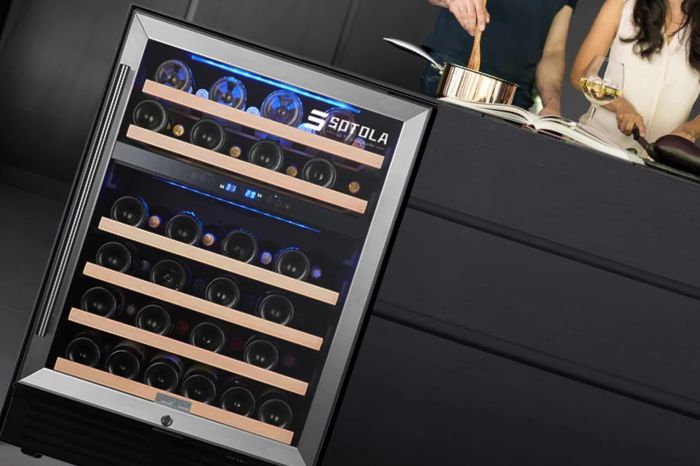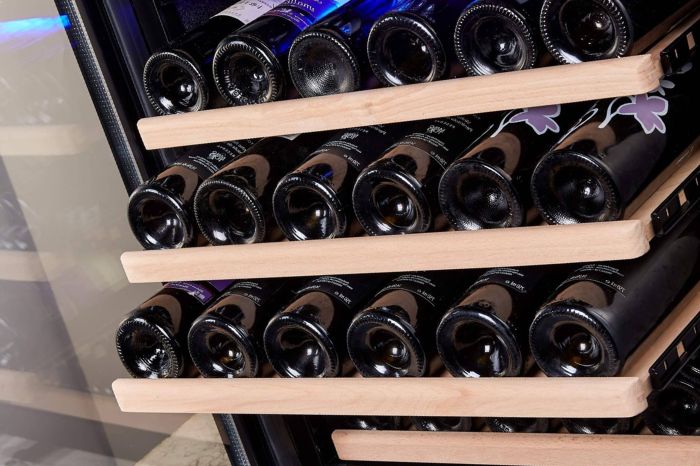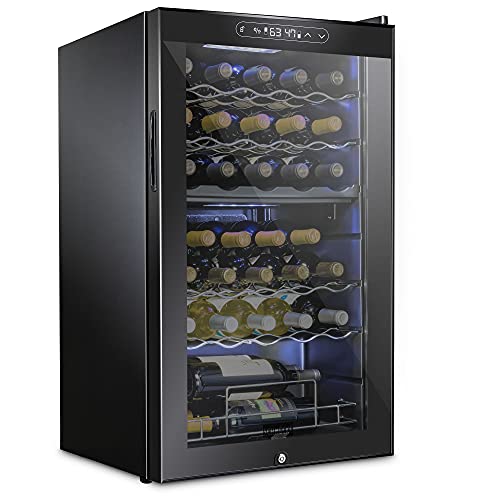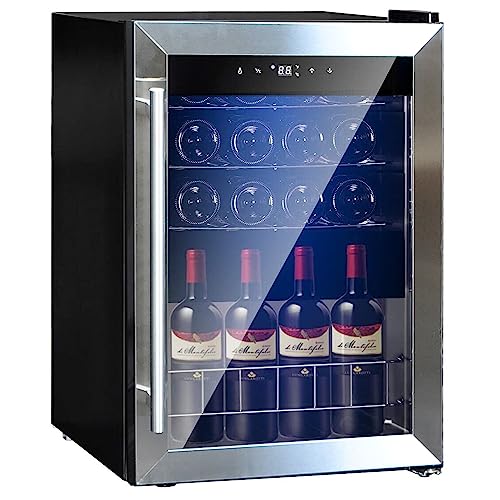Can You Put Water in a Wine Cooler?
Wine is a delicate beverage that requires proper storage conditions to preserve its quality and taste. For this reason, wine coolers have become a staple appliance for wine lovers around the world. They keep wine at a consistent temperature and humidity level, preventing the wine from spoiling or aging too quickly. However, many wine connoisseurs wonder whether it’s a good idea to add water to their wine cooler to enhance its cooling power. While some believe it can boost the cooling effect, others argue it can damage the wine and harm the appliance.
In this comprehensive article, we will explore the science behind wine coolers, the benefits, and drawbacks of adding water, and provide expert recommendations to help you make an informed decision. By the end of this article, you will have a deeper understanding of wine coolers and whether adding water is right for you.
The Pros and Cons of Adding Water to a Wine Cooler
The biggest advantage of adding water to a wine cooler is that it can provide additional cooling power. Wine coolers are typically set to keep wine at a temperature ranging from 45-65 degrees Fahrenheit, depending on the type of wine being stored. However, if you live in a hot climate or your wine cooler is located in an area that gets a lot of sun or heat exposure, you might find that your cooler isn’t able to keep up with demand. By adding water, you can help chill the air inside the cooler and lower the temperature of your wine.
Another benefit of adding water is that it can help increase humidity levels inside the cooler. This is particularly useful if you have corks that can dry out and crack, which would allow air into the bottle and spoil the wine. By keeping the air inside the cooler humid, you can help to minimize the risk of this happening.
However, there are also some potential downsides to adding water to your wine cooler. If you’re not careful, you could end up creating too much humidity, which could cause mold to grow inside the unit or on the bottles themselves. Additionally, if you use tap water that contains minerals or other impurities, you could end up damaging the wine or the internal components of your cooler.
How to Properly Clean a Wine Cooler After Adding Water
If you do decide to try adding water to your wine cooler, it’s important to follow some basic guidelines to ensure that you do it safely and correctly. The first step is to choose the right type of water. Distilled water is usually the best choice, as it has been purified and doesn’t contain any minerals or chemicals that could harm your wine or your cooler. Alternatively, some people recommend using bottled spring water or filtered tap water. If you do use tap water, make sure to check it for impurities first to ensure it’s safe to use.
Once you’ve chosen your water, the next step is to add it to the cooler. Fill a small container, like a bowl or cup, with water and place it inside the cooler on the top shelf. Don’t try to pour water directly into the unit, as this could damage the cooling system. The water will evaporate naturally and create a more humid environment inside the cooler.
After a few days, you’ll want to check the humidity and temperature levels inside the cooler to make sure they’re still within safe ranges. If you notice any unusual odors or mold growth, it’s time to clean the cooler. Start by unplugging it and removing all bottles and shelves. Clean the shelves and interior of the unit with a mild detergent and warm water, making sure to rinse thoroughly. Then dry the unit and shelves completely before reassembling and plugging it back in.
Is It Safe to Put Water in Your Wine Cooler and How Do You Do It?
In general, adding water to your wine cooler is safe and can help improve its cooling and humidity capabilities. However, it’s important to use caution and follow some basic guidelines to ensure that you don’t cause damage to your unit or your wine.
One important thing to keep in mind is that not all wine coolers are created equal, and some may not be designed to handle the additional moisture that comes with adding water. Before you try this technique, check your unit’s manual or contact the manufacturer to make sure it’s safe to do so.
Assuming it’s safe to proceed, the steps for adding water to your wine cooler are fairly straightforward. Choose the right type of water, like distilled or filtered water, and add it to a small container inside the cooler. Check temperature and humidity levels periodically to make sure they’re within safe ranges, and clean the unit thoroughly if you notice any odors or mold growth.
What Type of Water Should You Use in Your Wine Cooler?
As mentioned earlier, it is crucial to avoid using tap water in your wine cooler, as it contains contaminants and minerals that can harm your appliance and wine. Here are the different types of water you can use in your wine cooler:
Distilled Water: This is the safest type of water to use in your wine cooler. It is free from contaminants and minerals.
Spring Water: This type of water comes from natural springs and contains minerals in small amounts. While it is safe to drink, it may contain bacteria that could harm your wine cooler.
Purified Water: This water has gone through a purification process that removes all contaminants and minerals. It is safe to use in your wine cooler, but it can be more expensive than distilled water.
Conclusion
In conclusion, the question of whether or not you can put water in a wine cooler is a valid one. While it is generally safe to do so, you must take a few precautions to ensure the longevity of both your cooler and the wine it stores. Adding water to your wine cooler can help maintain the ideal temperature and humidity for wine storage, but only if your cooler is designed for it. Always check your cooler’s manual before adding water to avoid any issues.
If your wine cooler does have a built-in water reservoir, you can add water without worry. However, if it does not, adding water can lead to mold, bacteria, and unpleasant odors. To keep your cooler clean and functional, use distilled water and clean it regularly with a mild detergent. Doing so will prevent buildup and ensure a long-lasting experience.
In summary, wine coolers offer a convenient way to store and serve wine at the ideal temperature and humidity level. By adding water to your cooler, you can enhance its performance and keep your wine delicious and refreshing. Follow the guidelines provided, and you’ll have a properly functioning wine cooler all summer long.





